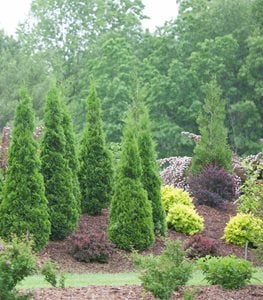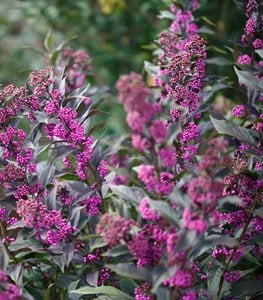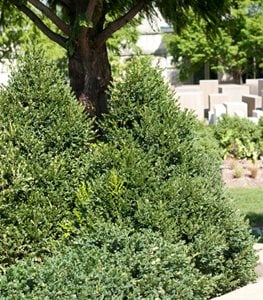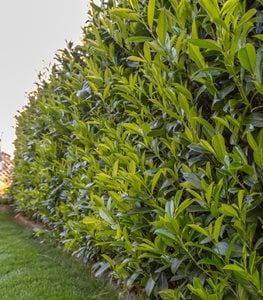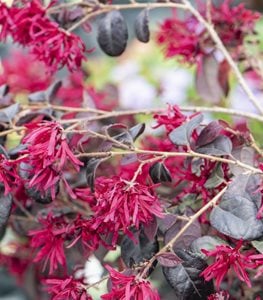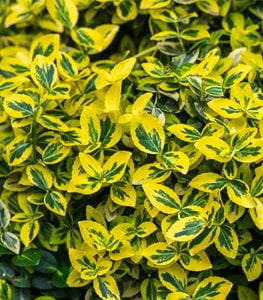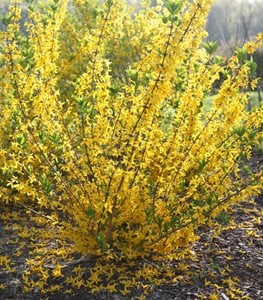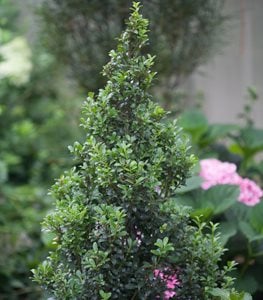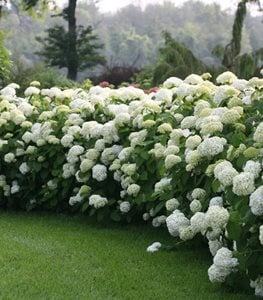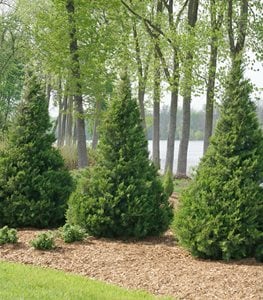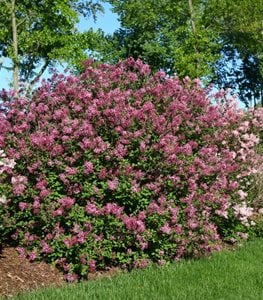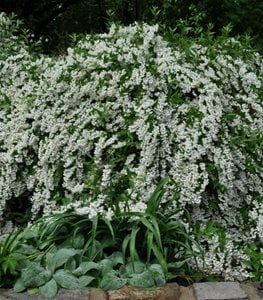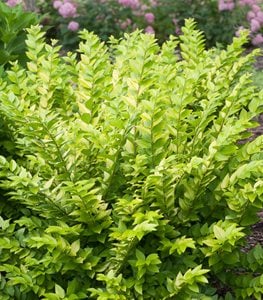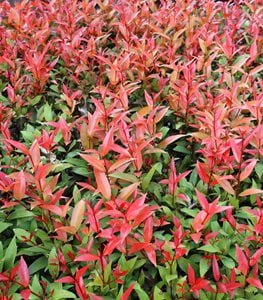15 Best Privacy Shrubs for Your Garden
Design for privacy using shrubs as hedging or screeningWith home lots shrinking and houses being built closer together, privacy has become more important than ever. Creating a buffer from neighbors gives a sense of seclusion and is a crucial component to creating an outdoor sanctuary away from the hustle and bustle of daily life.
Using shrubs to create privacy adds a living element that a fence or wall can’t offer. Hedging can be used to create intimacy, define garden rooms, or block out unsightly views.
When choosing privacy bushes, some things to consider are:
- Growth rate and mature size
- Ornamental attributes
- Multi-seasonal interest
- Amount of maintenance required
- Evergreen shrubs offer privacy year-round
- Deciduous shrubs (the types tha lose their leaves) allow more light into the yard during winter
- Do you want a neatly clipped formal hedge or a loose, naturalized look that requires less maintenance?
Learn more: Privacy Landscaping: How to Design for Privacy
SHRUBS FOR PRIVACY
ARBORVITAE (Thuja spp.)
Zones: 2-9, depending on variety
Exposure: Full sun to partial shade
Growth habit: Slender pyramidal or low mounding habit
Height/Spread: 2 to 70 feet tall, 2 to 25 feet wide
Growth rate: Slow to fast; from several inches to 3 to 5 feet per year, depending on variety
A coniferous tree or shrub with green, blue-green, or gold evergreen foliage. Varieties such as Polar Gold® or North Pole®, which have a slender pyramidal shape and dense growth habit, are especially suited to privacy hedging. Plant along the edge of a property or use to screen different areas of the yard.
Learn more about growing arborvitae.
North Pole® arborvitae from Proven Winners, pictured.
BEAUTYBERRY (Callicarpa spp.)
Zones: 5-10, depending on variety
Exposure: Full sun to part shade; produce more fruit in full sun
Growth habit: Mounding or arching habit
Height/Spread: 3 to 6 feet tall and wide
Growth rate: Medium to fast; 1 to 2 feet per year until reaching mature size
This moderately sized deciduous shrub is grown for the attractive purple or white berries that appear in fall. Green leaves may turn yellow in autumn, providing a stunning complementary backdrop to the fruit. Ease of maintenance and disease resistance makes this an appealing hedging plant. The informal growth habit makes this useful as hedging in a natural area or along a slope.
Learn more about growing beautyberry.
Pearl Glam® beautyberry from Proven Winners, pictured.
BOXWOOD (Buxus spp.)
Zones: 5-9, with a few varieties hardy to Zone 4
Exposure: Full sun to shade
Growth habit: Dense upright or mounding habit
Height/Spread: 1 to 20 feet tall, 2 to 8 feet wide, depending on variety
Growth rate: Slow to medium; average 6 inches per year
Boxwood has long been used in formal landscapes to define garden areas or provide privacy. The finely textured evergreen foliage, which is green, blue-green, or variegated, lends itself to regular shearing. Grow a larger upright variety such as ‘Green Mountain’ (pictured), ‘Green Tower’ or ‘Fastigiata’ along a property line or sidewalk or to screen garden areas.
Learn more about growing boxwood.
CHERRY LAUREL (Prunus laurocerasus)
Zones: 6-9
Exposure: Full sun to shade
Growth habit: Dense bushy habit
Height/Spread: 10 to 20 feet tall and wide
Growth rate: Fast; 1 to 3 feet per year
Also known as English laurel, this broadleaf evergreen bush is commonly used as quick-growing hedging. Plants produce thick glossy green foliage and fragrant white flowers in spring are followed by dark purple-black berries. Give this vigorous shrub plenty of room to grow, or shear into formal hedging. Makes a good hedge or privacy screen for shady areas. Plants may be invasive* (see where), as seeds from berries are dispersed by birds.
CHINESE FRINGE FLOWER (Loropetalum spp.)
Zones: 7-10
Exposure: Full sun to light shade
Growth habit: Upright mounding or spreading habit
Height/Spread: 1 to 15 feet tall, 3 to 10 feet wide, depending on variety
Growth rate: Moderate to fast, 1 to 2 feet per year until plants reach mature size
Related to witch hazel, Chinese fringe flower is a versatile choice for warm weather climates. This small to medium-sized evergreen shrub produces delicate ribbon-like flowers in spring that contrast beautifully with the green, variegated, burgundy or deep purple foliage. Use a larger variety such as ‘Burgundy’ or Ever Red® (pictured) as a privacy screen or hedging for a unique backdrop of year-round color.
Learn more about growing loropetalum.
EUONYMUS (Euonymus spp.)
Zones: 3-9, depending on the variety
Exposure: Full sun to shade
Growth habit: Upright, bushy, or creeping habit
Height/Spread: 1 to 20 feet tall and wide
Growth rate: Medium to fast; 1 to 2 feet per year
This diverse genus includes trees or shrubs that are evergreen or deciduous. Leaves are green, gold, or variegated (such as 'Aureo-marginatus', pictured), some with brilliant fall color. Tolerant of a wide range of light and soil conditions, euonymus is effective when massed along a slope or naturalized in a woodland setting. Some varieties can be invasive* in certain regions, or may be susceptible to pests or disease.
FORSYTHIA (Forsythia spp.)
Zones: 4-9
Exposure: Full sun to partial shade; blooms best in full sun
Growth habit: Upright bushy or arching habit
Height/Spread: 1 to 20 feet tall, 3 to 10 feet wide
Growth rate: Fast; 1 to 2 feet per year
One of the first shrubs to bloom in early spring, forsythia is valued for its brilliant yellow flowers that grow the entire length of the branches. The green lance-shaped deciduous foliage provides a serene backdrop throughout the rest of the growing season. This reliable shrub thrives in a wide range of conditions, making it suitable for low-maintenance landscapes. Allow to retain natural shape or prune into formal hedging.
Learn more about growing forsythia.
Flying Machine® forsythia from Proven Winners, pictured.
HOLLY (Ilex spp.)
Zones: 3-10, depending on variety
Exposure: Full sun to partial shade; berries produced best in full sun
Growth habit: Upright pyramidal, mounding, spreading, or weeping habit
Height/Spread: 1-1/2 to 80 feet tall, 1-1/2 to 50 feet wide
Growth rate: Slow to fast, depending on variety
Holly is a tree or shrub with evergreen or deciduous foliage in colors of green, blue-green, gold, or variegation. Highly ornamental berries develop in fall, lasting through the winter. Grow an upright or columnar shrub variety such as Sky Box® (pictured), ‘Blue Princess’ or English holly (I. aquifolium) as evergreen screening or hedging along a property line or fence. Some can be sheared into formal hedging.
Learn more about growing holly.
Sky Box® holly from Proven Winners, pictured.
HYDRANGEA (Hydrangea spp.)
Zones: 3-9
Exposure: Full sun to shade
Growth habit: Upright bushy or arching habit
Height/Spread: 3 to 15 feet tall, 3 to 12 feet wide
Growth rate: Fast; averaging 2 feet of new growth per year
This popular deciduous shrub is grown for the large showy flowers that bloom from summer into fall, depending on the type. Blooms occur in shades of blue, purple, pink, mauve, or white, with some changing color through the growing season. A backdrop such as a wall, fence, or evergreen hedge can offer additional privacy during winter months when shrubs are bare of foliage and flowers.
Learn more about growing hydrangeas.
Incrediball® smooth hydrangea from Proven Winners, pictured.
JUNIPER (Juniperus spp.)
Zones: 2-10, depending on variety
Exposure: Full sun to partial shade
Growth habit: Upright pyramidal, columnar, spreading, or weeping habit
Height/Spread: 1 to 130 feet tall, 1 to 25 feet wide
Growth rate: Slow to fast; several inches to two feet per year, depending on variety
Valued for its reliability, carefree nature, and versatility, this evergreen conifer can be found in tree or shrub form in a wide range of sizes and shapes. The softly textured foliage comes in shades of green, blue-green, or gold. Use a medium to large upright, columnar or pyramidal form such as Gin Fizz® (pictured), ‘Skyrocket’ or ‘Spartan’ for a quick growing hedge. Some can be sheared into a solid formal hedge.
Learn more about growing junipers.
Gin Fizz® juniper from Proven Winners, pictured.
LILAC (Syringa spp.)
Zones: 3-8
Exposure: Full sun to partial shade; blooms best in full sun
Growth habit: Upright bushy habit
Height/Spread: 4 to 15 feet tall; 3 to 12 feet wide
Growth rate: Medium; 1 to 2 feet per year until plants reach maturity
This hardy deciduous shrub is revered for the intensely fragrant flower clusters that appear in spring. Heart-shaped green foliage provides a serene backdrop during the rest of the growing season. Allow plants to retain their natural shape and choose varieties that will retain a suitable size for hedging or screening.
Learn more about growing lilac bushes.
Bloomerang® Dark Purple lilac from Proven Winners, pictured.
MOCK ORANGE (Philadelphus spp.)
Zones: 4-8
Exposure: Full sun to partial shade
Growth habit: Upright bushy or arching habit
Height/Spread: 3 to 10 feet tall and wide
Growth rate: Medium to fast; over 2 feet per year
Grown for its intensely scented flowers, mock orange has long been a staple of cottage-style gardens and native landscapes. This hardy deciduous shrub produces white bell-shaped flowers with an orange blossom scent for several weeks from late spring to early summer. Use it to enclose an outdoor seating area to enjoy the sweet fragrance up close.
Learn more about growing mock orange shrubs.
PRIVET (Ligustrum spp.)
Zones: 3-10
Exposure: Full sun to partial shade
Growth habit: Dense bushy habit
Height/Spread: 4 to 15 feet tall and wide
Growth rate: Fast; as much as 2 to 3 feet per year
Grown for its dense growth habit and textured foliage, these reliable shrubs can be evergreen, semi-evergreen, or deciduous. Foliage is green, gold, or variegated, with clusters of small white flowers that appear from late spring to summer. Shear into formal hedging or allow to retain their natural shape. Privets can be invasive*, so care must be taken when selecting. Grow a medium-sized cultivar such as Golden Ticket® (pictured), which is non-invasive.
Golden Ticket® privet from Proven Winners, pictured.
Learn more about growing privet shrubs.
RED TIP PHOTINIA (Photonia x fraseri)
Zones: 7-9
Exposure: Full sun to partial shade
Growth habit: Upright bushy habit
Height/Spread: 10 to 15 feet tall and wide
Growth rate: Fast; 1 to 3 feet per year
This broadleaf evergreen shrub is a favorite of landscapers for its quick growing nature and showy new growth, and is commonly used as hedging. Plants respond well to shearing and look best with regular spring pruning, which stimulates additional new growth. When planting photinia, make sure to allow enough room for plants to fill in. Hardy in milder climates, red tip photinia is disease-prone in humid areas of the south.
RED TWIG DOGWOOD (C. stolonifera)
Zones: 2-8
Exposure: Full sun to partial shade
Growth habit: Upright spreading habit
Height/Spread: 5 to 9 feet tall, 5 to 10 feet wide
Growth rate: Fast; 1 to 2 feet per year
Also known as red osier dogwood, this hardy native shrub is grown for its multi-seasonal appeal, particularly the bare branches that provide bright winter color. Spring flowers are followed by small white fruit, with some varieties producing brilliant fall foliage. Agreat choice to naturalize as a hedgerow in a woodland setting or plant along a sunny border where the bright twigs can be appreciated.
Learn more about growing red twig dogwood shrubs.
Arctic Fire® red-osier dogwood from Proven Winners, pictured.
*INVASIVE VS. AGGRESSIVE GROWERS
When learning about plants, it's important to understand what it means for a plant to be invasive. From the USDA website: "An invasive species is non-native to the ecosystem under consideration, and whose introduction causes or is likely to cause economic or environmental harm or harm to human health."
Keep in mind that a plant may be invasive in one environment, but okay to grow in another. So, although some of the plants above are noted as being invasive in certain regions, they are fine to grow in others.
It's also important to note that there is a difference between a plant being considered invasive and one that grows aggressively. The Universiy of Illinios Extension Service defines aggressive plants as those that have the ability to "spread fast enough within the garden as to cause issues to other garden areas where the plant is not wanted or is intended to be growing." This is not the same as being identified as being invasive.
Resources for determining if a shrub or plant is invasive in your region:
- Your local extension service (search online)
- Local Master Gardener's Association (search online)
- Invasive Plant Atlas
More: Invasive Plants & What to Grow Instead
RELATED:
Trees for Privacy
Garden Room Ideas for Extending Living Space
Flowering Shrubs
Evergreen Shrubs
